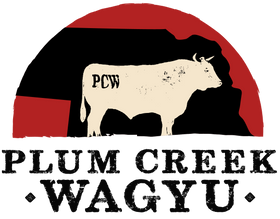Corn silage is an essential component of many cattle feeding programs, and it offers significant benefits when used in the diet of Wagyu cattle. As a rich source of energy and fiber, corn silage helps promote optimal growth and enhances the marbling of the meat, which is a signature characteristic of Wagyu beef.
1. High Energy Content Corn silage is energy-dense, providing the necessary calories for Wagyu cattle to grow at a steady rate. The high carbohydrate content in corn silage supports the development of intramuscular fat, also known as marbling. This marbling is what gives Wagyu beef its renowned tenderness and rich flavor.
2. Improved Digestive Health The fiber content in corn silage aids in maintaining healthy digestion in Wagyu cattle. A well-functioning digestive system ensures that the cattle can efficiently utilize the nutrients in their feed, leading to better overall health and more consistent weight gain.
3. Cost-Effective Feed Source Corn silage is not only nutritionally beneficial but also cost-effective. It allows farmers to make the most of their resources by providing a substantial amount of feed per acre. This efficiency is particularly important in the long-term feeding programs required for raising Wagyu cattle, which often extend beyond that of other breeds to achieve the desired marbling.
4. Consistent Quality When properly stored and managed, corn silage provides a consistent quality feed source throughout the year. This consistency is crucial for Wagyu cattle, as fluctuations in diet can impact the uniformity of marbling and overall meat quality. With corn silage, farmers can ensure that their cattle receive a steady supply of high-quality nutrition.
5. Environmental Benefits Using corn silage as part of a Wagyu feeding program can also have environmental benefits. Corn silage production makes use of the entire corn plant, reducing waste and promoting sustainable farming practices. Additionally, the efficient use of land resources helps minimize the environmental footprint of cattle farming.
Incorporating corn silage into the diet of Wagyu cattle is a strategic choice that supports the production of premium beef. Its high energy content, digestive health benefits, cost-effectiveness, and consistency all contribute to the superior quality of Wagyu beef, making it a valuable component of any Wagyu feeding regimen.
Related Posts
How We Select and Age Our Wagyu Beef for Optimal Flavor
Learn about the process of selecting and aging Wagyu beef at Plum Creek Wagyu. Discover the differences between dry-aging and wet-aging and how each method enhances the flavor and tenderness of our premium Wagyu cuts.
How We Select and Age Our Wagyu Beef for Optimal Flavor
Learn about the process of selecting and aging Wagyu beef at Plum Creek Wagyu. Discover the differences between dry-aging and wet-aging and how each method enhances the flavor and tenderness of our premium Wagyu cuts.
Sustainable Ranching at Plum Creek Wagyu: Our Eco-Friendly Practices
Discover Plum Creek Wagyu’s commitment to sustainability and eco-friendly ranching practices. Learn about our efforts in land stewardship, water conservation, and reducing our carbon footprint to produce premium Wagyu beef responsibly.
Behind-the-Scenes at Plum Creek Wagyu: From Pasture to Plate
Discover the life cycle of a Plum Creek Wagyu cow, from birth to plate. Learn about the care, feeding, and stress-free environment that contributes to the exceptional quality of our Wagyu beef.
Wagyu Beef vs. Kobe Beef: What’s the Difference?
Curious about the difference between Wagyu and Kobe beef? Learn how these two premium beef types differ in terms of origin, quality, and flavor, and discover why Kobe beef is considered the gold standard of luxury dining.
The Science Behind Wagyu Marbling: Why It’s So Special
What makes Wagyu beef so incredibly tender and flavorful? The secret lies in its marbling. Discover the science behind Wagyu’s signature fat distribution and why it creates the ultimate steak experience.








